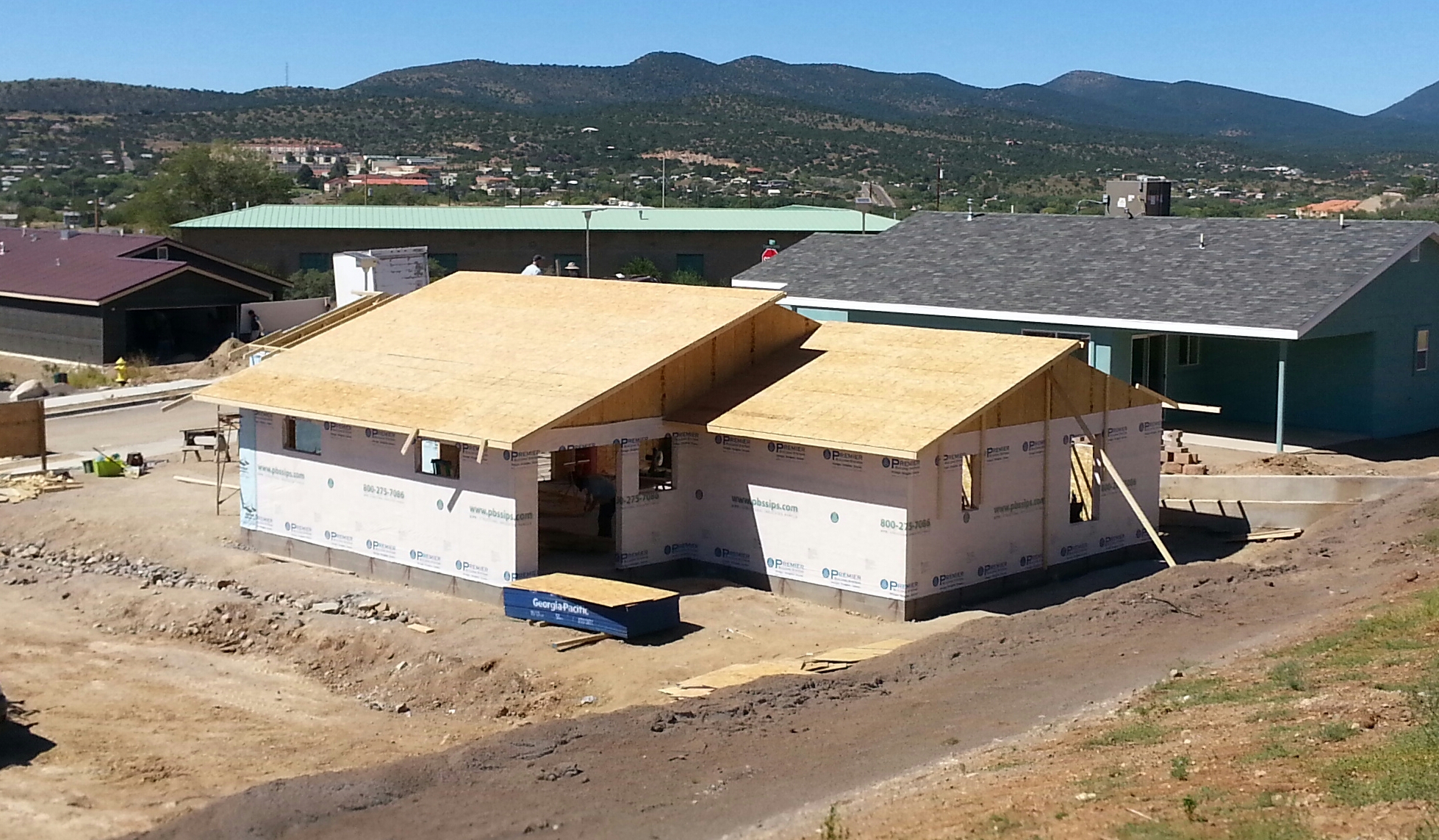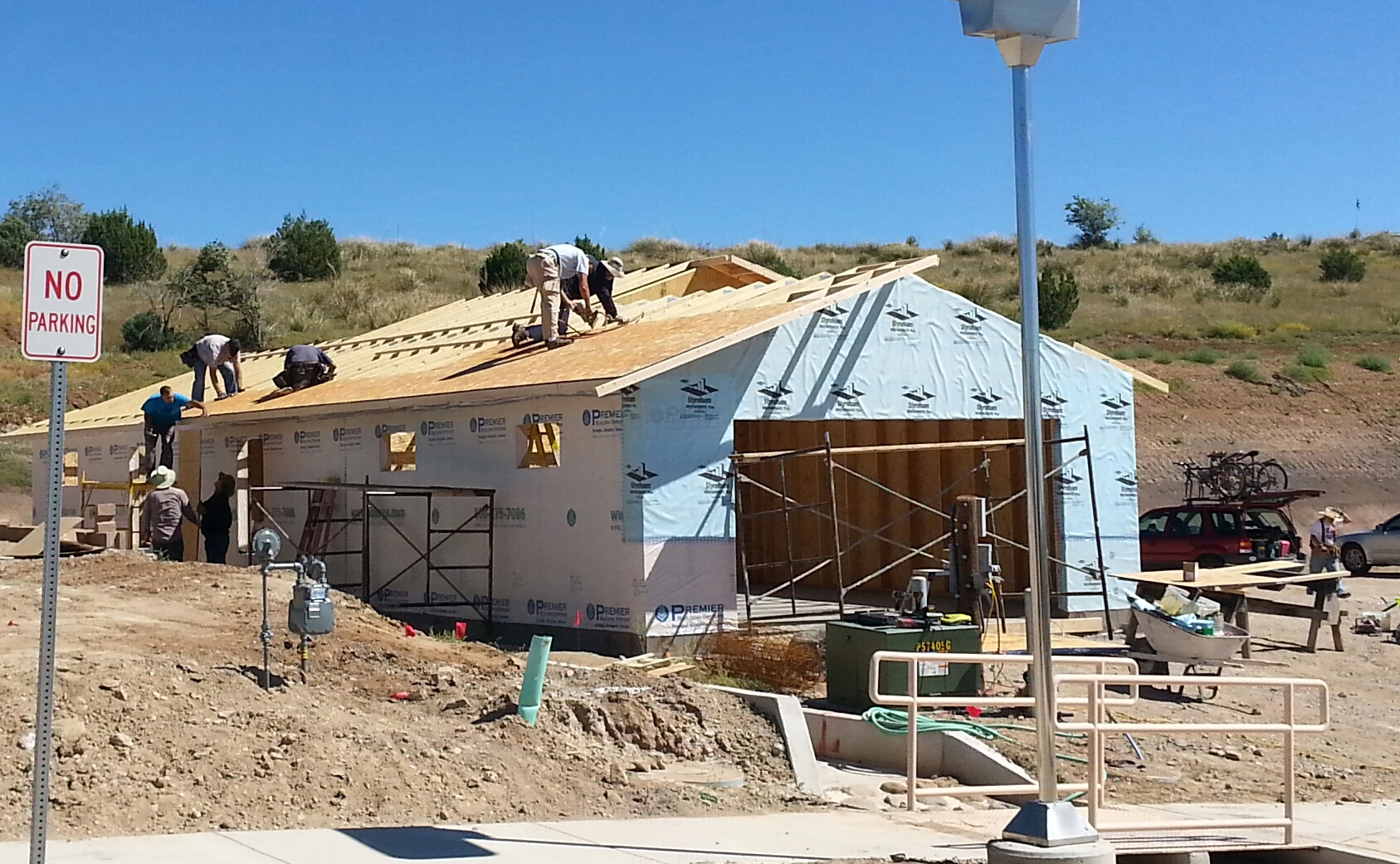We enter Minnesota with enthusiasm of a returning hero! We have spent part of our travels already around the Detroit Lakes area just a mere 50 miles from Fargo ND. Eventually, we will travel back to Detroit Lake as it is our staging station for our appointment with Habitat for Humanity in Silver City, New Mexico!
The last Wisconsin town is Superior and its sister town Duluth which lays in Minnesota. Both are major port cities on the shores of Lake Superior. Both are very busy receiving domestic and international shipments. Their skylines feature giant tall cranes, wide silos, docks and warehouses lining this Lake Superior bay. After spending the past few weeks in the high canopy woods of Wisconsin, these industrial sights are an assault to our eyes but at the same moment interesting! It is amazing that all this industrialization flourishes on the edge of pristine wilderness all made possible by Lake Superior and its sister lakes connected to the Atlantic!
We turn North on to Highway 53. I am sure that it acquired its numerical designation due that it has 53 stoplights before one can clear the Duluth metropolitan area. Finally, suburbs gave way to forest. We are headed to the Northern Woods!
We skirt by International Falls! The city is called “The Ice Box of America.” It is named because it is the city that regularly records the lowest temperature in America. I remember it only because when International Falls wasn’t the city with the lowest temperature, it was my long-time home Jackson, Wyoming!
The city has another claim on fame. In the Rocky & Bullwinkle cartoon show, the pair’s home was Frostbite Falls, a direct reference to International Falls! I silently symphonize with all the frozen citizens living in and around International Falls. I am grateful to have escaped freezer burn!
As we continue North, it is somewhat amazing to see how much fishing means to the local economies. We pass hundreds of vehicle-towed boats scurrying to their destination boat ramp on one of the thousands of lakes located in the north woods! It is satisfying knowing that people with the same passion I carry for fishing supporting vast areas!
Nearly every town on the route has several tackle stores, all supplying everything an angler could need. Several towns announce their town boundaries with giant fish statues. Orr was the home of the Giant Bluegill & Baudette was the Walleye Capital of the World. There are hundreds of hotels, inns and resorts catering to anglers, all proclaiming they are the best at helping anglers catch Northern Pike, Walleye, and Pan fish. Make no mistake: Walleye is King in Northern Minnesota!
People believe fishing is a summer event, but it is easy to see that fishing and its related industries drive these economies year around. There are lines of ice shanties & huts stored on lakeshores waiting for the hard water season. I have known that fishing generates a lot more revenue than golf in the United States. To see that expression in a local economy is impressive!
Near Ely and Tower MN is Bear Head Lake State Park! This park was voted America’s favorite park in 2010. I can see how it acquired its fame. It is a beautiful northern lake with dark clear water that is completely ringed with Spruce, Birch & Balsam trees. The forest is alive with sounds from Woodpeckers, Pine Squirrels and Chipmunks which is welcome after the sounds of silence that dominated the Wisconsin canopy forests!
The whole area around the State Park is heavily wooded that is sporadically sprinkled with bogs. The bogs are called the Pickle Jar environment. In a normal forest, trees, branches, and leaves fall to the ground and decay, thus returning their nutrients back to the soil and available for the living plants and trees. It is a cycle that is self-perpetuating.
A bog‘s environment is 180 degrees opposite. Its high-water table is acidic which inhibits decay. Dead matter then continues to accumulate and ultimately forms peat moss. Peat moss is the jar’s lid and this layer of peat moss effectively seals the wetlands and eliminates decay by denying sunlight and oxygen to dead plant matter.
With no decay, nutrients are not readily available, so the trees and shrubs that grow there appear stunted and arrested. Even in death, the Spruce trees look like skinny small stalagmites silhouetted against the sky! This gives the bogs an eerie look where death is captured in permanent frame straight out of a B-rated horror film.
Because to this lack of available nutrients, the bogs are a place where small plants have become carnivorous, evolving ingenious ways of capturing insects to help supply their nutritional needs! The Pitcher Plant, the tiny Sundews and the Bladderwort all have develop strategies of catching insects to supply their nutrients. It was very interesting reading about their methods of attracting hapless insects to feed themselves because of living in a harsh environment. Kind of makes you wonder about life on other planets and how they could evolve and survive in severe climates.
Ely is the jumping off point for the Boundary Waters Canoe Area that encompasses 1.1 million square acres, 5,000 lakes, and is the largest wilderness area west of the Mississippi River! This area is so vast and connected by water ways and short portages that adventurists can explore this totally pristine area through Northern Minnesota all the way into Canada. The most efficient mode of travel through the thousands of lakes is done by the canoe or kayak. Also, to keep the area pristine and limit the footprint of humanity on the area, only a small number of travel permits are issued every year. Understand that it would require a lifetime to explore every possible waterway. WOW! I wonder how many fishing lures would be needed on such a commitment!
Ely is also the headquarters for both the International Wolf Center and the North American Bear Centers. Both are state of the art study centers for biologist, scientists and state management officials who are committed to determining how to establish best practices and policies for both these full-time residents of the Minnesota north woods.
Their interpretive centers, informational films and audio presentations were great and help us understand more about these often-maligned animals. We discovered that study methods for the two species have evolved into learning how much both animals contribute to the natural order of the entire ecosystem rather than just shooting them with tranquilizers, weighing and measuring them.
Both centers had small tracts of land that housed resident animals in a natural wooded world that imitated their natural environment. I liked both observational sites as it provided excellent opportunities to acquire photos of animals that would be difficult to obtain in the wild. I got some great photos of wolves and bears doing wolf and bear things. I observed a huge male Black bear in the lake with his nose underwater blowing bubbles. That was priceless!
Both Ely & Tower featured a small grocery chain called Zup’s. They were tiny compared to our usual Wal-Mart grocery haunts, but on further inspection, we discovered that they were renowned for their hand-crafted sausages and brats.
We studied all the numerous choices and decided on Spicy Porchetta and a smoked sausage. After charcoal grilling the Porchetta, we discovered that their reputation was spot on! Wow, they were delicious! We beat a hasty return to Zup’s to restock! Yummy, Yummy!
After a short time in Bear Head Lake State Park, we packed and moved even more North to Zippel Bay State Park on the shores of Lake of the Woods. We glided past fields of sunflowers, alfalfa and wild grass. The endless corn fields of our southern travels have bowed and surrendered to the shorter northern growing season.
Our route swings us parallel to the Rainey River. It is a wide river and looking across its width you can see Canada. We were excited to gaze into another country just by looking across the river. Our excitement ended when our phones suddenly believed that we were now traveling in Canada. Our Verizon service ceased and our smart phones went silent. Stumped at what had happened, we frantically searched for a health care attendant for our phones.
We found a Radio Shack and they informed us that many phones suffer that same malady and they are busy everyday helping people re-establish service. We took our place in line.
At Zippel Bay, I had hoped to venture out on Lake of the Woods to fish for the lake’s tremendous Walleye population. Unfortunately, a strong late summer storm sent even the most seasoned boaters to shore. I spend some time there talking to anglers coming off this massive Canadian Shield Lake. It was enjoyable talking to them because no matter how much each angler is a stranger to each other, fishing is a universal language and once spoken, every person becomes a friend.
The conversations are good-natured and generally filled with laughter and jokes. Quite often information is shared that helps a person like me who is totally inexperienced in the nuances of catching this elusive game fish. I have always been generous with my expertise and I appreciate when another angler returns theirs.
We have reached the northern most point in our travels. Amazing! We look backwards now and formulate our plans to eventually return to our starting point in Arizona. Our first stop on the return is Detroit Lakes. This resort destination is a natural for us with its proximity to 400 lakes appealing to Jude’s love of kayaking and mine of fishing. We love the area as it is somewhat civilized but bordered by pristine backwoods, lakes and trails.
As we travel south, we are re-introduced to the endless corn fields. However, they are changed. When first seen, they were a pleasing visual experience with their stocks waving in the southern breezes and the light reflecting off their leaves. Now the fields are brown with maturity and stand rigid awaiting their inevitable harvest. I feel somehow attached from watching their growth throughout our nomadic travels. Now their maturity reminds me that our summer wanderings will follow the increasing number of Canada Geese V’s headed south.
Detroit Lakes greets us with north winds and cooler temperatures than our first visit. We graduate from shorts to jeans and vests. I ask our campground host when the area gets its first snow. “Anytime, now,” was the short reply. We check on the Weather App on our phones.
Fishing has a seasonal approach. Each season has its unique set of parameters. Following those general guidelines creates a greater chance to catch them! With the shorter days and cooler mornings, the fish suddenly realize that the numbing cold winter days are coming. Imagine getting into the shower and just when you are washing off, the hot water goes missing! That sudden rush of air into your lungs is like the fish’s urgency to prepare for their long winter hibernation. They need to increase their calorie intake to store fat that will sustain them until spring.
That urgency creates fabulous fishing and I am ready to take advantage of that urgency. I have selected one lake out of the hundreds available here in western Minnesota. When you see Bald Eagles, Ospreys and King Fishers making their home there, I instinctively know that this body of water is a fertile fishery.
What remains is a search among through and along all the lake’s structure to find those fish that are willing to strike. I believe it is not the catching fish that drives me but the search for them that is the main stimuli. With a few hours, I locate fish and over the next two weeks, I refine my approach and enjoy the best fishing of my nomad travels this summer. Fall fishing is the best!

